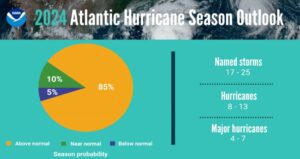Insurer input key to better building strategy, NZ academic says

The insurance sector must be part of discussions on where and how homes are built as New Zealand considers how to better prepare for a future affected by climate change, Massey University Senior Lecturer in Economics Michael Naylor says.
Insurer input should be included in future building standards, and the insurance industry should play a key role in deciding which areas of New Zealand are removed from residential use – or red-zoned – and when this should occur, Mr Naylor says in an article in The Conversation.
Insurers could be required to use mutually agreed criteria to set premiums based on price and service and not “hidden risk models.”
“The best path forward would be to establish a multi-disciplinary expert group that includes members of the insurance industry and reinsurers,” Mr Naylor said.
“If insurers are not involved in the discussions on how the country adapts to climate change, we risk whole sections of the country becoming uninsurable.
“The insurance industry can help.”
The expert group would create criteria and scenarios for housing development and also set guidelines for councils to determine if a rural area should be opened to new housing development, or if an existing housing area should be red-zoned with houses removed.
“By including insurers, new building standards could be set so that homes better withstand climate change, improving the likelihood of them being insured,” Mr Naylor said.
Insurer risk models could be open to public debate, he says, and pricing could be flexible as climate change makes some areas higher risk. This “collaborative and transparent” approach would mean insurers could be required to guarantee an offer of insurance renewal for a fixed number of years, backed by EQC or reinsurers.
“Working with the insurance industry would offer a level of certainty as we face an uncertain future – helping New Zealanders protect their homes in the face of changing risks,” Mr Naylor said.
As the threat of natural disaster increases, Mr Naylor says insurers will have no choice but to raise some premiums to unaffordable levels or withdraw the offer of insurance all together. Cover in disaster-prone areas like the East Coast or Edgecumbe is already only provided as a “public relations gesture,” he says.
Without action, reinsurers could decide parts of New Zealand are simply too risky and force the withdrawal of all cover in some areas – leaving potential buyers unable to secure a mortgage.
“Areas which are currently low risk could become high risk in the future thanks to climate change,” the article said.
“Insurers will be forced to withdraw cover from clients who still have decades left on their mortgages (and) banks may become very conservative in issuing home loans to areas they consider risky.
“There needs to be the option to withdraw insurance coverage in the future, based on evolving models of climate change risk, and all potential risks need to be clearly communicated to potential buyers though land information memorandum reports.”




